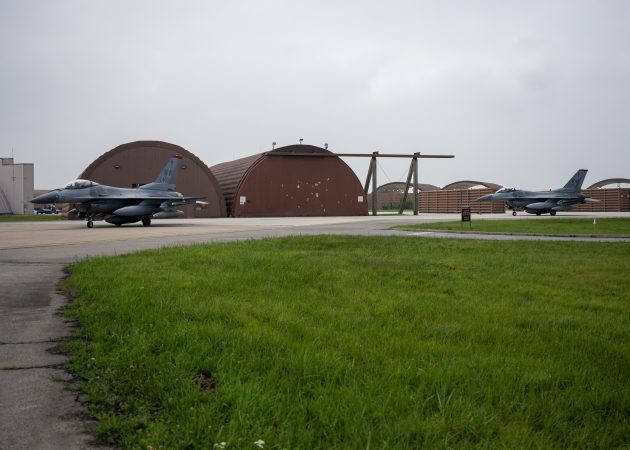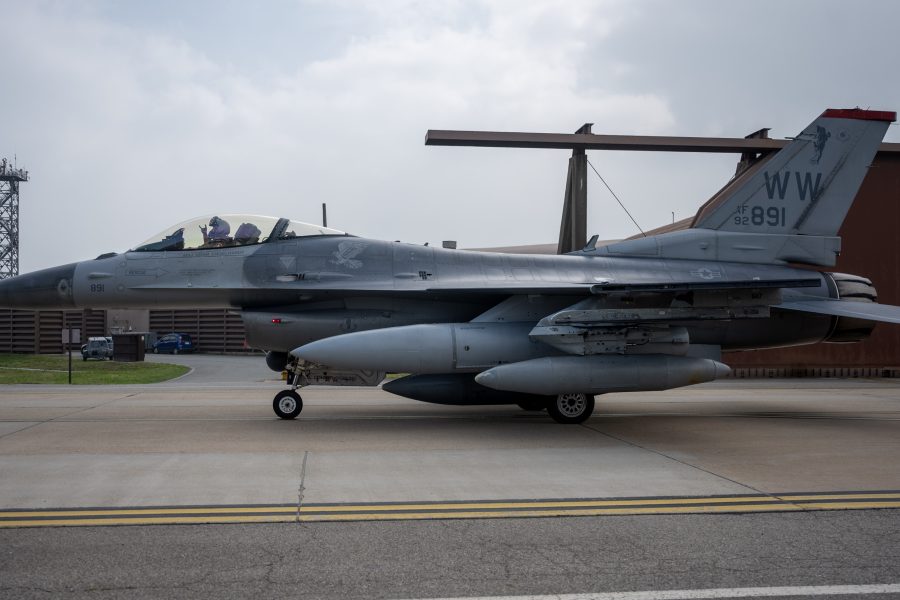The Air Force permanently transferred F-16 fighter jets from Misawa Air Base in Japan to Osan Air Base in South Korea late last month, the next step in its transition to base F-35s in Japan.
The move continues a modernization drive away from aging F-15C/Ds and A-10s. Osan’s 51st Fighter Wing said in a July 8 release that the F-16s from Misawa come with advanced capabilities, an apparent reference to USAF’s Post-Block Integration Team modernization program. PoBIT includes a new active electronically scanned array radar, center display, and more.
“These upgrades enhance our game a bit,” said Chief Master Sgt. Robert Parsons, senior enlisted leader of the 25th Fighter Generation Squadron, in the release. “The F-16’s new features give pilots greater spatial awareness, helping them see the battlefield more clearly. As we move closer to 2027, having a capable aircraft now, instead of waiting for a new airframe, is critical.”
A wing spokesperson declined to say how many F-16s were transferred or if any existing F-16s at Osan were divested or transferred to make way for the new jets. “At this time, we are not disclosing the specific number of transferred assets or any end-strength numbers outside of what has been previously released,” the spokesperson said.

But the release said the new jets bolster the 51st Wing’s “ability to ensure peace and stability on the Korean Peninsula.” Osan is located about 50 miles from the border with North Korea, and 250 miles across the Yellow Sea from China.
The transfer is just the latest move by the Air Force to bolster its fleet at Osan. Last year, the 7th Air Force, which oversees USAF forces in Korea, announced it was conducting a “Super Squadron” test by transferring nine F-16s to Osan from Kunsan Air Base. Earlier this year, it announced it was expanding and extending that test, sending an extra 31 fighters to Osan.
The Misawa transfer is distinct, however, from the Super Squadron test, the spokesperson said.
“The intake of these F-16s is more aligned with our overarching efforts to maintaining an overwhelming force posture in the region and adapting to evolving global threats,” the official said. “F-16s related to the Super Squadron test will be transferring from Kunsan Air Base over the summer months as the wing works toward the second phase of the Super Squadron test.”
The F-16s take the place of Osan’s A-10 close air support aircraft, which are being retired from the base this year. Meanwhile, Misawa is shedding its F-16s to make room for F-35 that are slated to start arriving next spring.
“The divestment of F-16s from the 35th Fighter Wing at Misawa Air Base is part of the DOD’s planned modernization of tactical aircraft in Japan and the transformation of Misawa AB to a dedicated F-35 base,” said a spokesperson for the 35th Fighter Wing, responding to Air & Space Forces Magazine. “This transition underscores the U.S. commitment to maintaining air superiority in the Indo-Pacific region with the most advanced fighter aircraft. The forthcoming F-35 arrival at Misawa represents a significant enhancement to our capabilities, allowing us to project fifth-generation airpower and further strengthen our alliances in the region.”
Air Force officials previously told Air & Space Forces Magazine they plan to rotate fighters through Misawa to bridge the gap between the departure of the F-16s and the arrival of the F-35s. USAF has also cycled fighter jets through Kadena Air Base on the Japanese island of Okinawa, while awaiting the assignment of a permanent F-15EX unit to Okinawa next spring.


